Most of the Celery Companions gain more from Celery due to its particular scent and fragrance.
Celery is a vegetable grown from a marshland plant in the Apiaceae family, and It is a biennial plant that grows all over the world.
Only in its second year does it produce blooms and seeds. Celery leaves are both pinnate and bipinnate, with rhombic leaflets that are 3-6 centimetres (1-2 ½ in) long and 2-4 cm (1-1 ½ in) wide.
Its Flowers are creamy-white, 2-3 mm (332-18 in) in diameter, and grow in dense compound umbels.
Depending on the location and cultivar, its stalks, leaves, or hypocotyl are consumed and cooked. However, both the stem and the leaves are edible parts of a celery plant in all varieties.
Celery is a vegetable that is consumed all over the globe. Because the leaves have a strong taste, they are used less often as a seasoning in soups and stews or as a dried herb.
Celery leaves are widely used in cooking to impart a moderately spicy taste to meals that are comparable to, but not as strong as, black pepper.
Celery leaves may be used dried as a spice for baked, fried, or roasted fish and meats and as part of a mix of fresh seasonings for soups and stews. They may also be eaten raw as in salads or as a garnish.
Additionally, the seeds may be crushed and combined with salt to make celery salt. Celery salt may be prepared from either a root extract or dried leaves.
Celery prefers fertile soil that has been amended with lots of compost or well-rotted manure.
Because Wild Celery grows in boggy ground, you’ll need to provide continuous hydration for this demanding vegetable, while a sunny location should promote healthy, even growth.
Celery is not frost-hardy, so choose an appropriate type for your environment and start early. It grows best in full sun, although partial shade is OK.
Carrot fly, celery fly, Leaf miners, and Root Nematodes are frequent pests that target Celery in the garden, whereas Celery mosaic Virus, Black blight, Powdery mildew, White Mold, Leaf spot, and Downy mildew are prevalent diseases.
Companion planting with Celery is critical for reducing the impact of these diseases and pests on the plant’s growth and development.
Planting companion plants with Celery helps to prevent pests, provides shade for Celery, particularly tall plants, helps to manage weeds in the garden; and in turn, Celery helps to ward off these partner pests with its characteristic aroma.
So in this article, we will be looking at Thirty (30) Good companion plants and Eight (8) Bad Companion plants of Celery and the reason why you should plant them and not plant them with your Celery.
Table of Contents
GOOD COMPANION PLANTS FOR CELERY
1. Basil

Basil (Ocimum basilicum) is a culinary plant of the Lamiaceae family (mints). Basil is a perennial herb that is commonly grown as an annual. It is sometimes referred to as sweet Basil or Great Basil.
It is a delicate plant that is utilized in many different cuisines across the globe. Basil tastes vary depending on the type.
The pungent aroma of Basil repels pests that may infest Celery. They offer extra protection for your other companion plants due to their shared capacity to repel common insect pests like beetles and aphids.
Allowing Basil to flower may also attract a range of useful pollinators, such as bees and hoverflies, to your garden, boosting pollinator density.
2. Bee Balm
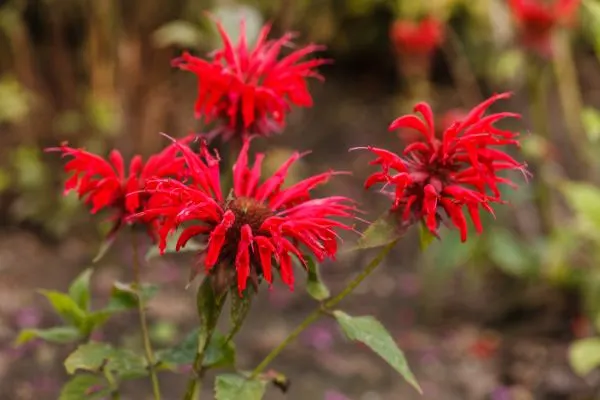
Bee Balm is a popular perennial plant that is a member of the Lamiaceae family of mints. Other names for it are Horsemint and Monarda.
Wild varieties produce blooms in a variety of colours, including red, pink, and light purple. They are typically used for medicinal purposes.
Bee balm, like BasilBasil, has a strong aroma that keeps pests away from Celery.
Be balm also repels many dangerous insects and pests that feast on Celery, and they are both excellent defences against pest invasion.
Aside from that, when planted alongside Celery in the garden, bee balm boosts its growth and flavour. This makes it a Good Companion of Celery.
3. Broccoli

Broccoli belongs to the Brassicaceae family and the genus Brassica. The plant’s huge blooming head, stem, and little auxiliary leaves are consumed as vegetables.
It may be eaten raw or cooked in various ways, including stir-frying, steaming, or microwaving.
The most difficult pest for brassica plants is the cabbage white butterfly caterpillar. If Celery is planted alongside Broccoli and any other bigger brassicas, the cabbage whites will be kept at bay.
In exchange, the huge leaf sections of Broccoli may help shade the immature celery shoots from the sun. This makes it an excellent Celery Companion Plant.
4. Brussels sprouts

Brussels sprout is a cabbage cultivar of the Gemmifera cultivar group (Brassica oleracea), cultivated for its delicious buds.
The most popular way to prepare Brussels sprouts for cooking is to clip the buds from the stem. Boiling, steaming, stir-frying, grilling, slow cooking or roasting are common methods of preparing the buds.
Celery repels white cabbage moths and other pests that damage brassicas, like Brussels sprouts. As a result, it is another excellent companion plant for Celery.
Furthermore, since the two crops have identical upkeep requirements, gardening becomes much more manageable and easier.
Companion planting Brussels sprouts with Celery is an excellent strategy to preserve garden space since Brussels sprouts take up very little room in your garden, enabling you to optimally use available space.
Brussels sprouts also attract beneficial insects like ladybugs and parasitic wasps, which pollinate your plants and devour pests such as aphids.
However, it is important to know that while growing Brussels sprouts do not grow well when planted with strawberries, kohlrabi, or pole while warding off deadly insects.
5. Cabbage

Cabbage is a biennial plant that contains numerous varieties of Brassica oleracea. It is a leafy green, scarlet (purple), or white (pale green) plant used as an annual vegetable crop for its densely-leaved heads.
The bulk of its applications is for Culinary purposes.
These vegetables may be grown in the same bed as Celery with no negative implications.
Furthermore, the plants help each other. The white cabbage butterfly, for example, is a pest that targets members of the cabbage family because the aroma of Celery repels insects, and Cabbage grown near celery benefits.
The Cabbage, on the other hand, protects the immature celery shoots from the hot sun.
Similar to the cucumber plant, Cabbage, on the other hand, achieves this without the need for a trellis. Cabbage and Celery complement each other!
It is also cultivated alongside Celery because the aroma of Celery shields the Cabbage from cabbage butterfly assaults.
6. Cauliflower

Cauliflower is a vegetable plant that belongs to the Brassicaceae family. Ideally, only the plant’s head should be consumed because it is the edible part of the plant, which consists of fleshy stalks and partially grown blooms.
White is its most popular colour. Various cuisines use cauliflower prepared in a variety of ways, including boiling, frying, grilling, pickling, and steaming.
Celery repels white cabbage moths and other pests that damage brassicas. Larger brassicas, such as cauliflower, may help shield the young celery shoots from the sun.
This destructive bug causes significant damage to brassica plants by munching through the leaves and destroying the plant’s viability.
Cauliflower is an excellent companion plant for Celery. It won’t compete for the same nutrients in the soil, and it will attract helpful insects that will improve the growth of your cauliflower.
7. Chamomile

Chamomile is the common name for a group of daisy-like plants of the Asteraceae family. You may flavour dishes and drinks, mouthwash, and soaps with chamomile.
Chamomile is an excellent companion plant for Celery since it improves the taste and flavour of neighbouring celery plants when cultivated close. However, use caution while sprinkling it near the rows of Celery since it spreads swiftly. Although chamomile has a low pest infestation rate, Celery helps to prevent pests such as aphids and mealy bugs that may damage chamomile.
8. Chives

Chives are a flowering plant in the Amaryllidaceae family with edible flowers and leaves. Chives are a popular herb that may be cultivated in home gardens for both decorative and culinary purposes.
The pungent aroma of chives plants repels pests that seek to eat Celery. Interplanting celery and chives is also thought to improve the flavour of Celery.
Plants in the allium family, such as chives, are known to improve the flavour of Celery by adding sweetness to its stalks.
Chives are an excellent companion plant for Celery since they not only repel insects but also make your Celery taste sweeter.
Chives also emit a chemical into the soil that repels subterranean insects that seek out plant roots. They also keep aphids away.
9. Cosmos
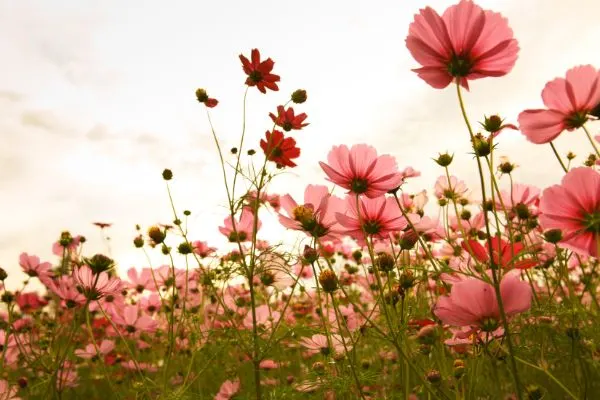
Cosmos are either herbaceous perennials or annuals. The colour of their flowers varies significantly between species.
Several attractive plants of the genus are popular in gardens. They are mostly used for ornamentation.
Cosmos is another flower that attracts beneficial insects (such as butterflies and honey bees) and parasitic wasps that feed on pests since they do not like the fragrance or taste of its petals, making it an excellent companion plant for Celery.
Planting them beside Celery also provides shade. It is a good idea to blend them with other pollinator-attracting flowers around the garden’s border.
Cosmos may also attract beneficial insects, which may benefit not just flowers but also other veggies you may be planting by spreading pollen.
10. Cucumbers

The cucumber (Cucumis sativus) is a widely-cultivated creeping vine plant in the Cucurbitaceae family that usually bears cylindrical fruits, which are used as culinary vegetables.
Cucumbers may have a mild melon aroma and flavour.
Cucumber vines provide shade from the hot summer heat for both the cool-loving Celery and the soil surrounding it.
Also, the spreading leaves of a cucumber plant may act as a natural mulch to keep weeds at bay around your Celery.
In exchange, interplanting Celery with cucumber plants can assist celery stop whiteflies from biting the cucumbers, increasing cucumber output and making them a great companion plant for each other.
When combining Celery and cucumbers, make sure your cucumber variety is a vining variety. Some cucumbers are bush varieties, but they lack vines to climb a trellis.
11. Daisies
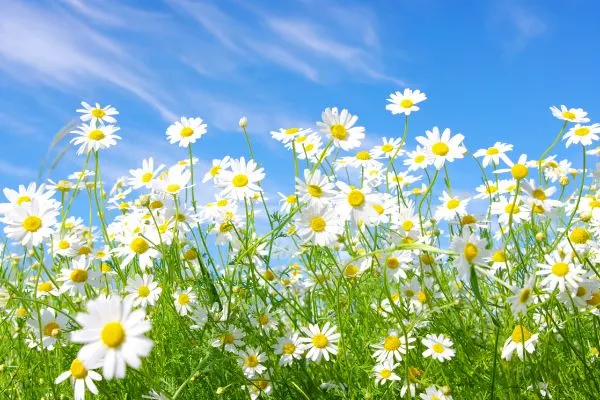
The daisy, Bellis perennis, is a European plant of the Asteraceae family that is commonly regarded as the paradigmatic species of the term daisy.
Young leaves may be eaten raw in salads or cooked, but they become more astringent as they mature. Flower buds and petals are edible uncooked, and may be used in sandwiches, soups, and salads.
Maintaining a healthy garden is difficult when an ongoing bug infestation devours your celery stems. Daisies are one among many flowers that might protect your Celery against undesirable pests.
Daisies have a pungent odour that organically repels whiteflies, aphids, ant colonies, cabbage worms, and cabbage moths from your vegetable garden.
Daisy is a flower that draws a lot of pollinators to your Celery and other garden plants. As a result, Dill is an excellent partner to the celery plant.
12. Dill
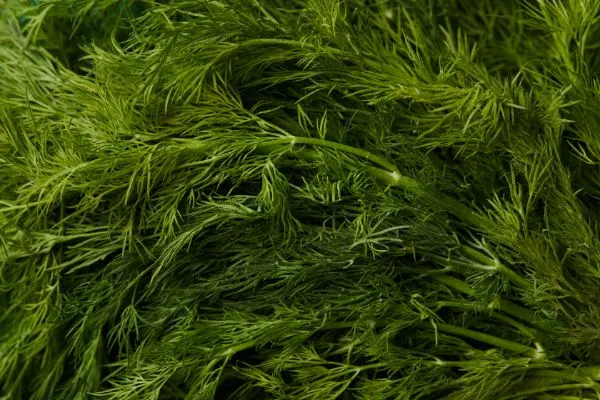
Dill is an annual herb that belongs to the Apiaceae (Celery) family and is used to flavour dishes. Chefs produce culinary spice from dill seeds. Dill is best used fresh since it loses taste quickly when dried.
However, freeze-dried dill leaves keep their flavour for many months.
Dill’s pungent aroma repels bugs that may infest Celery. Strong-scented herbs, such as Dill, cover the aroma of target crops like Celery and deter pests.
Dill and other aromatic plants When left to blossom, it functions as an attractant for important pollinators, increasing the pollination of your Garden plants.
Their odours may also be repulsive to bigger animals like rabbits and deer, who may munch on your crops.
13. Garlic

Garlic is a bulbous blooming plant, An example of an Allium species; garlic plants are hardy plants, typically resilient and unaffected by many pests or diseases.
In order to direct all of the garlic’s energy toward bulb growth, the scapes are cut off. You may consume the scapes either raw or cooked.
The strong scent of garlic repels bugs that want to eat Celery. Furthermore, it is said that interplanting Celery and garlic improves the taste of the former.
Although in general, allium family members such as onions, leeks, shallots, green onions, and garlic can boost the taste of your celery crop, and their anti-fungal characteristics will also serve as a natural insect repellent inside the soil.
Alliums are also superstars in the realm of companion gardening because they are antifungal and antibacterial, and they help prevent illnesses from taking root in your garden beds.
Garlic will repel rabbits, mice, and even deer from your garden, which is fantastic if you’ve had rabbits, mice, and even deer come to munch on your garden in the past.
This occurs because garlic has a strong odour even while it’s growing. Garlic is a suitable companion plant for Celery because of this combination.
14. Geraniums
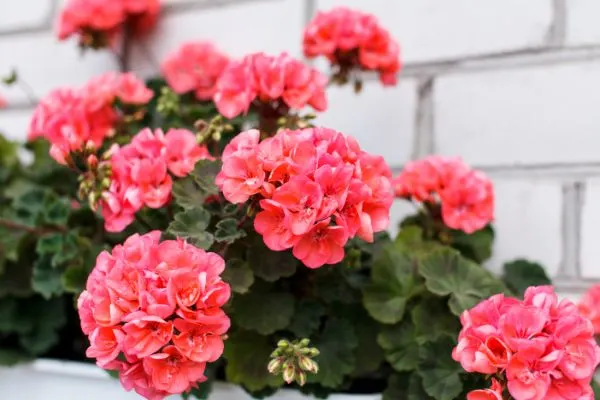
Hardy geranium is a flowering plant species in the Geraniaceae family. This family may be utilized in several ways in the landscape, depending on the species.
However, this specific species produces great ground cover or plants for rock gardens.
Geraniums have a strong aroma that repels and deters worms, snails, and flea beetles, all of which may be harmful to celery plants. They are also recognized for preventing and eliminating Japanese beetles.
Geranium blooms also attract pollinators that are useful to other plants in the garden, resulting in a healthy environment. Growing along the rows or within a garden bed, the flowers look gorgeous and offer charm.
15. Kohlrabi

Kohlrabi is a biennial vegetable that is also known as German turnip or turnip cabbage. It belongs to the same species as Cabbage, Broccoli, and cauliflower.
It may be consumed raw or cooked. Both the stem and the leaves are used to make edible recipes.
Because celery plants repel cabbage moths, they make excellent companion plants for cabbage family members such as kohlrabi.
Cabbage moths will nibble through the leaves of cole crops, reducing harvest output.
16. Lavender
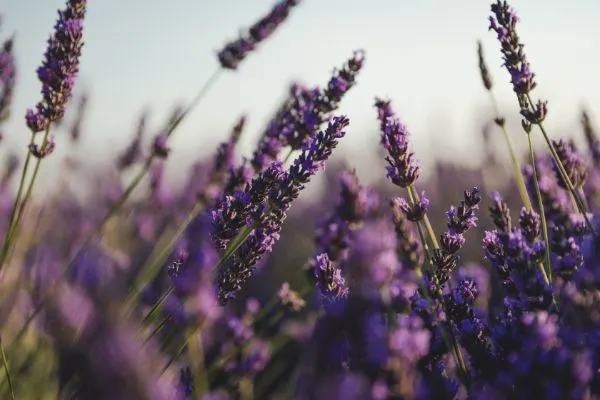
Lavender is the common name for a genus of flowering plants in the Lamiaceae family called Lavandula (mint family).
Most culinary methods use dried buds, which are often referred to as flowers. Lavender leaves have a milder flavour than rosemary.
Several flowers, like lavender, protect your Celery from pests. Whiteflies, aphids, ant colonies, cabbage worms, and cabbage moths are naturally repelled by some flowers in your vegetable garden.
It’s also well known that flowers like lavender attract pollinators, which helps pollinate your garden plants. Interplanting Celery with garlic improves its taste.
17. Leeks

The leek is a vegetable that is a cultivar of Allium ampeloprasum, often known as the broadleaf wild leek.
The main edible component of the plant is the bundle of leaf sheaths, which is often incorrectly referred to as a stem or stalk. Salads can benefit from raw leeks.
Leeks, in particular, are excellent celery companion plants because they assist in keeping celery leaf miners at bay, and the Celery will benefit from the shade given by the leeks as they get larger during hot summers.
The aroma of the leek, which is comparable to garlic or onions, may help repel pests such as carrot rust bugs. Leeks repel them from Celery and other plants in your yard.
It is also believed that interplanting Celery and leeks improves the flavour of Celery and makes it taste sweeter.
Leeks also have anti-fungal qualities that deter insects that might otherwise harm your Celery’s potting mix.
18. Legumes

A legume is a plant or the fruit or seed of a plant in the Fabaceae (or Leguminosae) family. The seed is also known as a pulse when used as a dry grain.
Grain legumes are grown for their seeds, which are consumed by humans and animals or used to produce oils for industrial purposes.
Green beans, bush beans, pole beans, and peas are legumes that fix nitrogen in the soil.
Celery needs a lot of nitrogen for proper development; thus, supplementing Celery with nitrogen from these legumes is a good idea.
This causes your Celery and other plants to grow quicker and bigger, which is particularly important since Celery needs a lot of nitrogen to flourish. Legumes are one of the greatest celery mates.
Celery, on the other hand, deters bean bugs. Bush beans are mostly susceptible to whitefly infestations; nevertheless, Celery may also protect bush beans against whiteflies.
Celery stems have a natural repellent effect on these pests.
On warmer days, pole beans also offer shade. The lofty frame of the bean plant protects the delicate frame of the celery plants underneath it. They can also withstand high temperatures.
Celery and bush beans have comparable soil needs and require the same amount of moisture. Legume is thus an excellent companion for Celery.
19. Marigold

The Marigold is one of the members of the Asteraceae family, often known as the Tagetes family, and is mostly constituted of annual or perennial herbaceous plants.
It has been employed as a flavouring element in cuisine and as a source of marigold oil, an essential oil.
The pungent aroma of marigolds repels pests. They may also be used as a trap crop for slugs, which can infest Celery.
Marigolds give colour to the garden while naturally repelling pests such as worms and flea beetles. If slugs are an issue, use a marigold trap crop to keep the slimy bugs away from your Celery.
Marigolds are an excellent companion plant to Celery.
Although Celery is susceptible to root-knot nematodes, which marigolds may help avoid, you can accomplish this by planting French marigolds the season before and tilling them into the soil.
Marigolds have little impact on root-knot nematodes until the plant decays. Plant the marigolds near your Celery early in the season and dig them under mid-season.
20. Mint
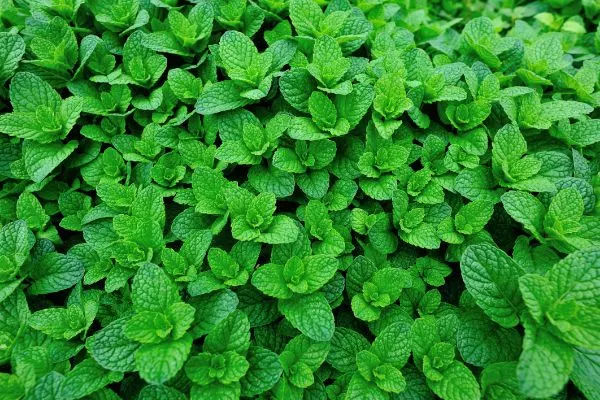
The Lamiaceae, sometimes known as the mint, deadnettle, or sage family, is a flowering plant family. It, like Basil, is utilized as a culinary and medicinal plant.
Mint can keep insects and bigger animals away from your Celery, such as rabbits and deer. Because the herb may grow invasive, we suggest putting it in a container.
Keep in mind that mint may thrive and be invasive, so put it in a container near your Celery rather than in the ground.
21. Nasturtium

Nasturtium is a genus of a few plant species in the Brassicaceae (cabbage family) that is sometimes known as watercress or yellowcress.
Nasturtium leaves, which are anti-bacterial, may be applied to wounds to help fight infection.
Nasturtiums, like marigolds, have a strong aroma that repels pests that want to eat your Celery, such as flea beetles.
Also, Aphids, Colorado potato beetles, Mexican bean beetles, and squash bugs are all repelled by nasturtiums. In addition, both the blossoms and leaves provide a peppery flavour to salads.
Nasturtiums may also be used as a ground cover to attract beneficial ground beetles and spiders, as well as a mulch crop to keep the ground cool and wet for your celery plants.
This flower is also useful as a trap crop. Nasturtiums are good companion plants and may be used as a sacrifice plant to keep pests away from Celery and other crops.
They will also attract hummingbirds and pollinators to your garden because of their vibrant colours and tasty nectar.
22. Onions
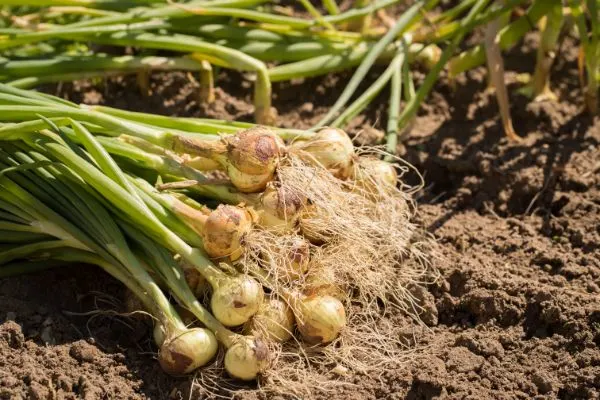
An onion is a vegetable that is the most frequently grown member of the genus Allium.
It is also known as the bulb onion or common onion. Although the onion is a biennial or perennial plant, it is normally handled as an annual and harvested during its first growing season.
Onions are widely diced and used in a variety of cuisines.
Bugs that seek to eat Celery are repulsed by the strong aroma of plants in the onion family. It is also believed that interplanting Celery and alliums improve celery taste.
Pests that destroy Celery are deterred by the strong odour of onions, garlic, chives, and other alliums. Many gardeners believe that growing alliums adjacent improves the taste of Celery.
23. Oregano
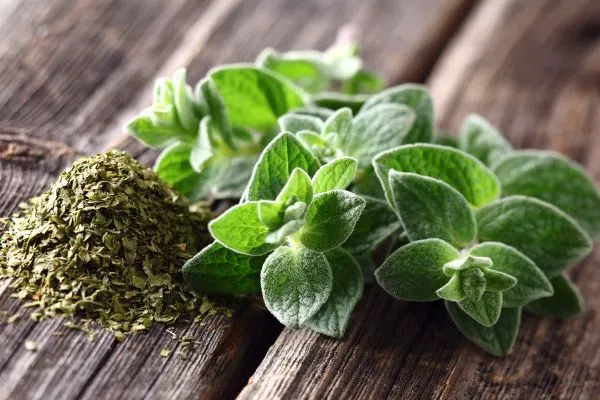
Oregano is a flowering plant of the Lamiaceae mint family. The flavour of oregano leaves, which are used in cooking, might be stronger when dried than when they are fresh.
Oregano repels bugs and hides the smell of Celery with its spicy perfume. Beneficial pollinators like butterflies and honey bees are also drawn to Oregano.
Pollinators will help enhance harvests in your plants by pollinating them.
The blooms also attract helpful insects such as ladybugs, parasitic wasps, lacewings, and garden beetles, which help manage pest infestations.
However, Oregano may be best planted in a container in the food garden, or you can Plant Celery in the herb garden as an alternative.
24. Rosemary
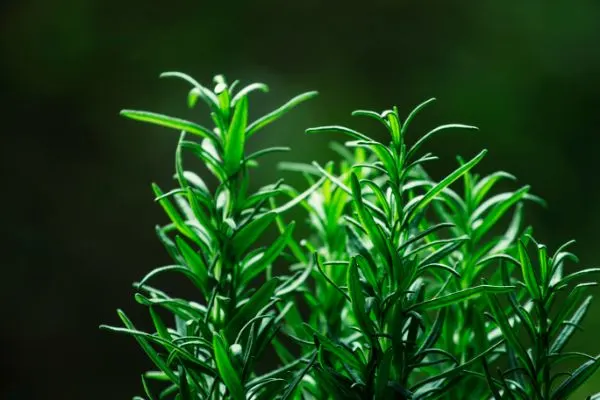
Rosemary is a perennial plant with evergreen foliage and blue flowers. It is a fragrant plant with a sweet and resinous flavour.
It belongs to the Lamiaceae family of sages, which also contains many other medicinal and culinary herbs.
Another strongly smelling plant, rosemary, protects Celery from insect nibblers.
Again, if your winters are mild enough for this sensitive perennial to thrive, you may wish to put it in a container or the herb garden.
As companion plants for Celery, fragrant herbs bring several advantages.
Their perfume not only conceals the odour of prized food plants and may even repel damaging pests, but it also attracts helpful pollinators to the vegetable garden.
Taller Rosemary plants may also provide filtered shade to the garden bed, shielding cool-season celery crops from excessive heat.
25. Sage

Salvia officinalis, often known as sage, is the biggest genus of plants in the Lamiaceae sage family. Salvia species include annual, biennial, and perennial herbaceous perennials. It is mostly used in cooking.
Another plant with a strong aroma, sage, also functions as a natural insect repellent. It, too, is a perennial that you may wish to maintain in a container or in your herb garden.
Sage deters dangerous insects and animals from attacking celery plants where it is grown. They choke out weeds and keep them away from the Celery.
Although sage hates wet, rainy soil, it thrives in well-drained soil and protects your Celery from a number of pests. Sage also offers ground cover, which aids with weed control.
26. Shallots

The shallot is a botanical variant that has been recognized as its own species, Allium ascalonicum.
Shallots are cooked with. They might be pickled. Finely sliced deep-fried shallots are often served with porridge in Asian cuisine.
Shallot, like other Onion family plants, has a strong aroma that repels pests that want to eat Celery. It is also believed that interplanting Celery improves its flavour and taste.
27. Snapdragons
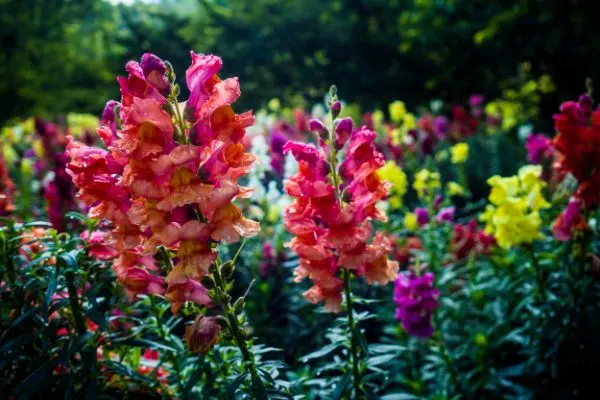
Antirrhinum is a plant genus often known as dragon flowers, snapdragons, and dog flowers due to the petals’ alleged resemblance to a dragon’s face that opens and shuts its mouth when pushed laterally.
According to experts, these gorgeous garden flowers repel numerous insects that may destroy your crop.
At the same time, they attract beneficial predators, such as parasitic wasps, who consume other insect pests.
It should also be highlighted that the presence of a healthy pollinator is excellent protection against pests and insects, and pollinators are drawn to snapdragon blossoming.
28. Spinach

Spinach is a leafy green with long leaves that may be utilized. It is an annual plant (rarely biennial).
Its leaves are a popular culinary vegetable eaten fresh or after storage by canning, freezing, or dehydration processes. It may be eaten cooked or raw, and the flavours vary greatly.
Both spinach and Celery need comparable growth conditions. Both need moisture and have comparable watering requirements.
Spinach can help choke off weeds and keep the soil cool and wet if grown thickly around your Celery. They both need at least 6 hours of direct sunshine daily.
Pests that feed on spinach are likewise deterred by Celery. Spinach and Celery are very Good Companion plants because these two need a lot of moisture since spinach will bolt if it dries out. On the other hand,
29. Thyme

Thyme is the herb (dried aerial portions) of several members of the mint family Lamiaceae’s fragrant perennial evergreen plant genus Thymus.
Thyme’s essential oils were also used as incense and put on coffins during funerals.
With its creeping tendencies and lovely perfume, Thyme offers natural ground cover and insect management.
However, it is a perennial, like most of the other herbs on this list, and should be cultivated in a portable container or the herb garden with Celery planted around it.
Thyme, as a companion plant, acts as a natural insect repellant and repels animals such as deer and rabbits. It is a garden companion, but it is also a partner in excellent dishes.
Thyme also acts as a weed killer, killing off weeds that develop near Celery.
30. Tomatoes

The tomato is an edible berry that the Solanum Lycopersicum plant produces, sometimes referred to as the tomato plant.
Tomatoes are considered vegetables in culinary terms, while their fruit is categorized as a berry in botanical ones.
It may be prepared in a variety of ways, such as fresh in salads or in slices, stewed, added to a huge range of recipes, or made into ketchup or tomato soup.
Celery aids in the prevention of tomato attacks in the garden. Conversely, Celery prefers shade during the warmest part of the day, which tomatoes grown close by may provide.
Because pepper plants, tomato plants, and Celery all demand comparable soil types and environmental growth circumstances, they grow nicely together without much hassle.
Both of these plants flourish in nutrient-rich soil; however, tomatoes need less water than Celery. Tomatoes go well with Celery because of this.
BAD COMPANION PLANTS FOR CELERY
1. Carrots

Carrots are in the same family as Celery; therefore, they are susceptible to many of the same pests and illnesses.
Planting them apart helps to prevent such issues from spreading. Furthermore, plucking carrots growing too near to Celery might disrupt the Celery’s thin roots.
Carrots, like potatoes, pose the same challenge as celery companion plants. Harvesting the lengthy carrot taproots might harm the celery root system.
The smell of carrots attracts the carrot root fly, which also attacks celery roots.
2. Corn
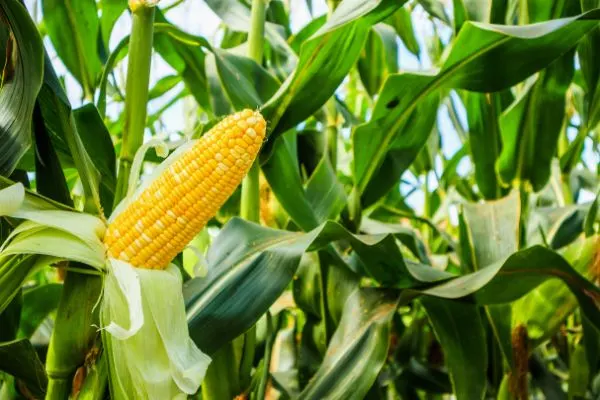
Corn and Celery are both heavy feeders, which means corn may outcompete Celery for nutrients, resulting in poor development.
Many say they offer shade for the celery plant, but too much shadow might inhibit celery development, resulting in stunted and tiny produce.
However, it is probable that sweet corn originates from dry areas, while Celery comes from moist soil.
Sweet corn is likewise a nutrient-demanding plant that would deprive Celery of essential elements.
3. Parsley

Parsley, like carrots, is a member of the celery family. Keep all three in separate areas of the garden to prevent pests and illnesses from moving from one crop to the next.
Parsley will compete vigorously for the same nutrients as Celery, resulting in stunted growth.
Furthermore, parsley might attract bugs that are hazardous to Celery growing close.
When growing Celery, keep it separate and far away from parsley since they will inhibit each other’s development and are troublesome together.
4. Parsnips

They belong to the same family as Celery, making them vulnerable to the same pests, and they may also readily damage Celery’s weak roots during harvest.
Carrots and parsnips will compete for the same nutrients as Celery does.
Using any of these as a companion crop for Celery may reduce the potential of both crops to grow in the garden.
5. Potatoes
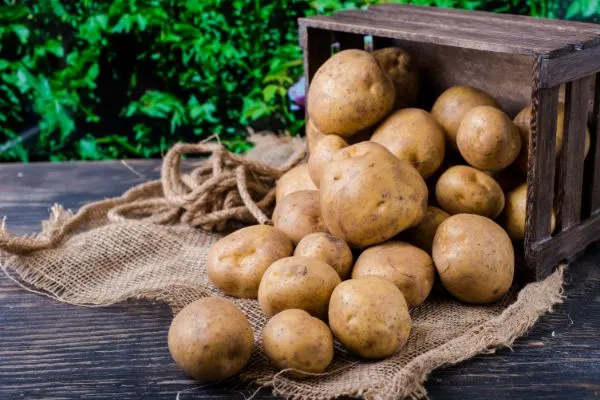
Potatoes ripen about the same time Celery achieves its maximum growth capacity, so you’ll uproot it when digging potatoes, depriving yourself of future celery harvests.
Celery is a perennial plant that will remain in the ground after the potatoes have been harvested.
As a consequence, the harvesting of potatoes may injure the celery plant’s shallow root structure, causing restricted development.
This root vegetable is also a strong feeder; if planted near together, the two plants will fight for nutrients and water.
Potatoes and Celery both demand a lot of resources and would suffer if grown together.
6. Rutabaga
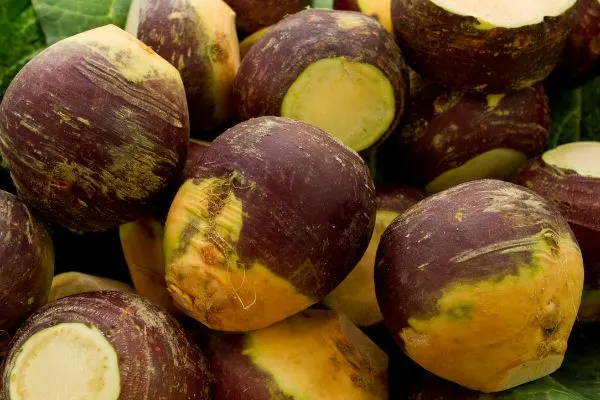
Because rutabagas mature around the same time as Celery, digging rutabagas will uproot your Celery and prevent you from harvesting future celery harvests.
This is the same harvesting problem as with potatoes. Celery roots are shallow and quickly disturbed.
You don’t want to be picking root crops from the area where your Celery is growing. This makes it a Bad companion for Celery.
7. Turnips

Like carrots and potatoes, turnips face the same challenge as any other root vegetable.
Turnips planted too near Celery will have their weak roots disturbed if dug up.
Furthermore, Turnips prevent Celery from absorbing all of the nutrients available in the soil. As a result, it is a poor companion plant for Celery.
8. Zucchini

Zucchini is a strong feeder and will deplete the soil of nutrients, perhaps stunting celery growth and lowering celery yield. As a result, Zucchini is a Celery’s Bad Companion.
FAQs
How much space does a celery plant need?

Celery is grown from seed, sown around February 1st, and then transplanted in April or early May, depending on your location.
Rows should be 2 feet apart, with plants 12 inches apart. Tight planting encourages tall growth and long petioles.
How deep do celery roots go?

Celery root systems are relatively restricted, often spreading out about 6 to 8 inches from the base of the stalks and developing about 2 to 3 inches deep.
As a result, constant hydration and appropriate nutrients in the first few inches of soil are critical in producing Celery.
Why are my celery stalks so thin?

Because Celery is mainly water, if your Celery has slender stalks, it might be a watering problem.
Maintain continuous soil moisture to prevent your plant from being thirsty, or else the stalks may not completely grow.
When exposed to sunlight, Celery turns bitter and tough.
How often should I fertilize Celery?
Feed with compost tea or a balanced fertilizer every 10 to 14 days. If nighttime temperatures are persistently below 55 degrees, cover plants with cloches to protect them; otherwise, the stalks will grow weak.
Blanching celery removes certain nutrients while keeping the stalks from turning bitter.
Is bone meal good for Celery?
Celery needs calcium for proper development, so add bone meal or gypsum. Bone meal is an excellent all-purpose supplement.
Can mint and celery be planted together?
Yes, mint and celery can be planted together in the same garden bed or container. However, it’s important to keep in mind that mint is a very aggressive and invasive plant, and it can quickly take over a garden bed if it’s not kept in check. It’s a good idea to plant mint in a separate container or to use a physical barrier, such as a plastic or metal edging, to contain the mint and prevent it from spreading.
Celery, on the other hand, is a slower-growing plant that requires plenty of moisture and nutrients to thrive. It’s a good idea to provide celery with plenty of water and fertilize it regularly to ensure it grows to its full potential. Planting celery near mint may also help to deter pests, as the mint may help to repel certain insects that might otherwise damage the celery plants.
Overall, it is possible to plant mint and celery together, but it’s important to pay attention to the specific needs of each plant and to take steps to ensure that the mint does not overtake the celery or other plants in the garden bed.
What can you not plant with celery?
There are a few plants that should not be planted near celery, or that may be incompatible with celery in the same garden bed.
Here are a few examples:
Tomatoes: Celery and tomatoes should not be planted together, as they are prone to the same diseases and pests, and they can compete for the same nutrients in the soil.
Fennel: Fennel and celery should not be planted together, as they can cross-pollinate and produce plants that are not true to their parent varieties.
Dill: Dill and celery should not be planted together, as they can also cross-pollinate and produce plants that are not true to their parent varieties.
Carrots: Carrots and celery should not be planted together, as they can compete for the same nutrients in the soil and may not grow to their full potential.
There are additional examples in the list as well.
Conclusion
Celery is a marshland plant of the Apiaceae family that has been grown as a vegetable, and we have learned thirty (30) good companion plants and eight (8) bad companion plants of Celery, as well as why they should and should not be planted.
Celery includes vitamin C, beta carotene, and flavonoids but contains at least 12 other antioxidant elements in a single stalk.
It’s also a great source of phytonutrients, which have been found to decrease inflammation and aid digestion.
It also has a high vitamin and mineral content and a low glycemic index. It’s a quick on-the-go snack that may also be used as a vegetable in prepared recipes, stir-fries, and salads.
Growing Celery in compost-rich, moisture-retentive soil that borders on wet but drains well will result in the greatest growth and yield.
Celery grows best on soil with a pH of 5.8 to 6.8. Celery likewise has a limited tolerance for heat and likes a cold, overcast environment.
Check out more companion plants

Amy
Tuesday 31st of January 2023
This is so much information for me to get my celery growing this year. I will definitely be using it as a reference to help me with my celery growing big and strong. Thank you for sharing.